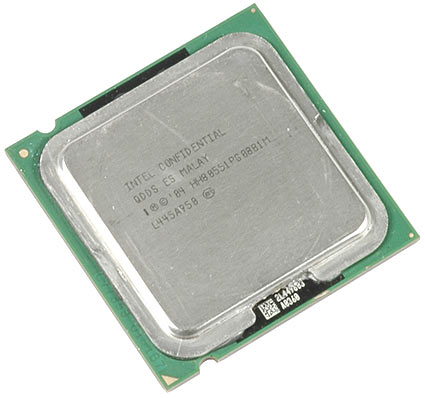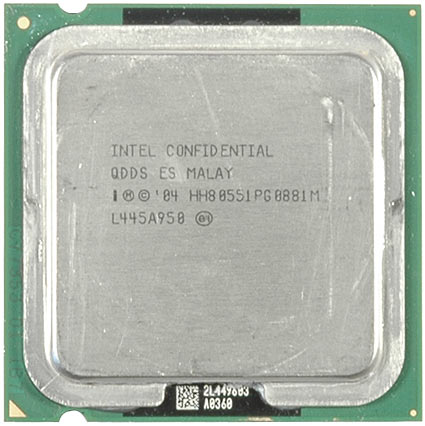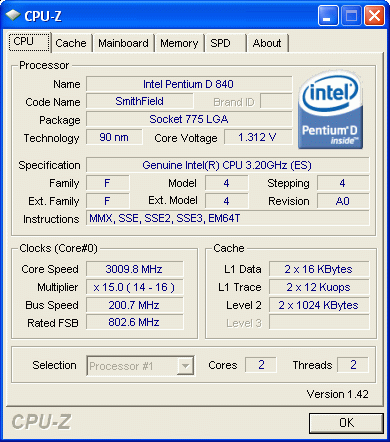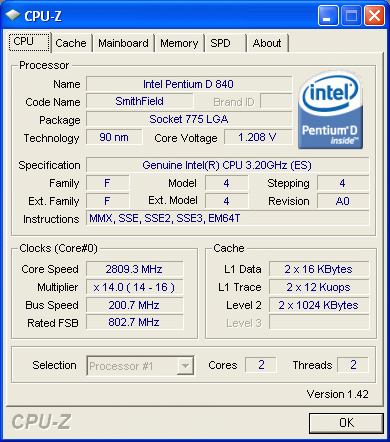Intel Power Consumption Then and Now
Pentium D 830
The Pentium D 800 series equals two Pentium 4 600 dies on a chip, but with only 1 MB L2 cache per core. All other features of the Pentium 4 600 series were retained. Since two processing cores require more power than a single one and the power envelope of 130 W imposes a restriction, clock speeds had to be reduced a bit. As a consequence, the fastest model was the Pentium D 840 at 3.2 GHz, with the Pentium D 820 at 2.8 GHz being the entry-level dual core. Our Pentium D 800 at 3.0 GHz, which is model 830, provided slightly more performance than the Pentium 4 630, but also required the most power of all processors in our lineup: 215 watt-hours is a lot, especially when compared to the 106 watt-hours of the Core 2 Duo E6850.
Related Articles:
- The Pentium D: Intel's Silver Bullet Previewed
- Intel Moves from Dual Core to Double Core
- Single Core CPUs Ain't Dead Yet
We used a Pentium D840 (3.2 GHz) and set it to 3.0 GHz (Pentium D 830).
With Enhanced SpeedStep enabled, a Pentium class FSB800 processor on Socket 775 will reduce its idle clock speed to 2.8 GHz. In case of the Pentium D 830, this is not much of a difference compared to the default clock speed of 3.0 GHz.
Get Tom's Hardware's best news and in-depth reviews, straight to your inbox.

Patrick Schmid was the editor-in-chief for Tom's Hardware from 2005 to 2006. He wrote numerous articles on a wide range of hardware topics, including storage, CPUs, and system builds.



